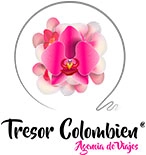We know about Colombian emeralds, but are they capable of being sustainable or community-based?
Where do Colombian emeralds come from?
Legend has it that emeralds are tears shed by an indigenous Muisca woman named Fura for the loss of her beloved husband Tena. Fura’s tears watered the forests and penetrated the earth, until they became the beautiful green stones we know today.
The Colombian subsoil has unique conditions, which make these magnificent stones more resistant, brilliant and of purer and deeper tonalities. It is for this reason that the Colombian emerald is one of the most desired gemstones in the world.

Colombia is the only place where emeralds with a bluish tone are found. In addition, the exclusivity of the “Trapiche emerald”; one of the rarest gems in the world (Its name is due to the resemblance it keeps with the shape of the pinions of the sugar cane squeezing machines).
Cundinamarca and Boyacá are the main emerald producing areas in Colombia. The area is made up of the municipalities of Muzo, in the northwest of the department of Boyacá, Gachetá and Gachalá, in the northeast of Cundinamarca. Gachetá and Gachalá, in northeastern Cundinamarca; and the mines of Borhur, Coscuez, Chivor, Peñas Blancas and Otanche in Boyacá.
Colombia represents 50% – 90% of the world emerald market.
How much are Colombian emeralds worth ?
An emerald acquires its value in relation to the quality of the stone. There are Colombian emeralds that can have a low price of US $ 30-50 up to US $ 10,000 or even more.
The $50 stones are younger emeralds, i.e. they are more opaque and lighter in color, probably with a more turquoise coloration. On the other hand, for the most expensive emeralds in existence are stones formed for almost 40 Million years! And they are translucent and dark green in color.
The color of the stone is crucial to determine its price, however, there are other variants that we must take into account; For example, inclusions, such as air bubbles or internal crystals, can reduce their price, so watch out for the following: a light stone with fewer inclusions than a darker one can cost more, regardless of its colors.
Finally, is there such a thing as a sustainable emerald? It is a question that leads us to analyze different aspects.
On one hand, from the ANM (National Mining Agency), working together with Fedesmeraldas, the resources and reserves commission delivered guidelines and research to reduce damages during the extraction of emeralds. The guide of good practices for Colombian emeralds is freely available on the Internet.
Below, we share the link:
Guide to good practices of the Colombian emerald From the ANM
The purpose of this guide is to provide guidance in the exploration and estimation of mineral resources and reserves in the Colombian emerald mining sector.
In the Colombian context, mining organizations are currently betting on the ‘tourist development’ of the areas surrounding the mines; bringing new audiences to these areas ensures greater visibility of the work of this guild and possibilities for tourist sales.
Let’s change the initial question What if there was a community based emerald? This is a real and feasible idea in Colombia. Linking the emerald trade, the tourism sector and travelers with new community projects is an ideal that is strongly proposed.
Following this thread, the Colombian community emerald would ensure fair payments to miners, training in the proper use of tools and safety protocols, mitigation of damages and training in the work of “responsible mining”, generating safe and direct jobs in the community, involving all the agents we have mentioned: the emerald guild, the tourism sector and travelers.
This process can only be developed with a basic principle, transparency. Making extraction procedures, sales values and explanations, honest and humane contracts known to the public; Colombian emeralds are capable of generating this and more.
It is necessary to end with the need and call for the reduction and mitigation of the environmental impact of the extraction process, this procedure is evident in the “guide of good practices of the Colombian emerald”. This symbolizes that from the tourism sector it is possible to propose to travelers and suppliers to be informed about these practices that the national mining agency is proposing.
Today in Colombia it is possible to live the experience of entering a sustainable mine and experience the extraction of these precious stones hand in hand with mining experts, the agency Tresor Colombien has a product specially designed to make you discover this magical universe of Colombia’s mining treasures.
What did you think of this information about Colombian emeralds? You can see more content like this, check out our blog and our sustainability topics

